#Geraldine of Albania
Text


Princess Geraldine of Albania after her christening, on january 28th, 2023. She is the only child of Prince Leka II of Albania and his wife, Princess Elia. The little girl was was christened as Geraldine Sibilla Françeska Suzan Maria by Archbishop Arjan Dodaj.
Geraldine: after her great-grandmother, Queen Geraldine of Albania.
Sibilla: after her godmother, princess Sibilla of Luxembourg.
Françeska: after pope Francis.
Suzan: after her grandmother, wife of prince Leka I.
(source: @princleka on Instagram).
#albania#royal children#princess geraldine#prince leka ii#princess elia#albanian royal family#leka ii#crown prince leka ii#crown princess elia#princess geraldine of albania#christening
40 notes
·
View notes
Text
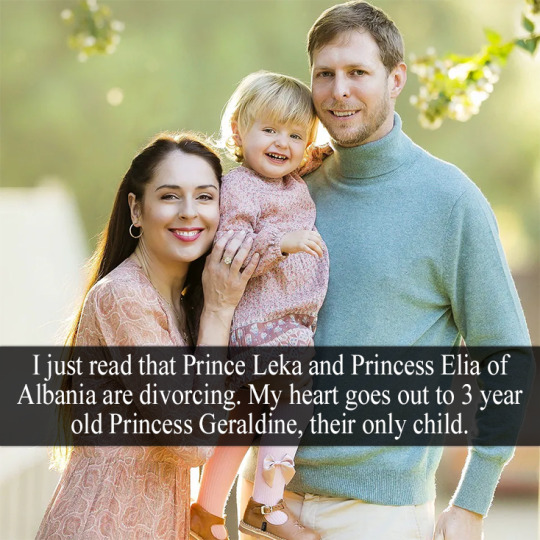
“I just read that Prince Leka and Princess Elia of Albania are divorcing. My heart goes out to 3 year old Princess Geraldine, their only child. 💔 😭 💔” - Submitted by Anonymous
25 notes
·
View notes
Photo

Queen Geraldine of Albania, 1939
383 notes
·
View notes
Photo



U prehtë në paqe, Geraldine of Albania. Born to Hungarian aristocracy during the Austro-Hungarian Empire’s waning years, Geraldine Apponyi de Nagy-Appony eventually worked as a shorthand typist after her family’s fortune was spent before catching the eye of King Zog I of Albania (incidentally, Geraldine was Catholic, Zog was Muslim) and marrying him in 1938 under the watchful eye of Il Duce’s son-in-law and heading off for their honeymoon in a Mercedes-Benz provided by Adolf Hitler. When Albania was invaded by the Italians a year later, the royal family fled, never to return--at least, never to return as the monarchs of Albania (Zog I died in exile in 1961; Queen Geraldine [who prefered to be called the Queen Mother of Albania] maintained thereafter that their son, Leka, was the rightful king of Albania; Leka’s son, Leka II, is called King Leka II by Albanian monarchists)--Geraldine was finally granted the right of return and did so in 2002, only to die 5 months later on this date at the age of 87. Oh, the Balkans.
Stamp details:
Issued on: August 30, 1938
From: Tirana, Albania
MC #274, 276, 278
#Geraldine of Albania#Countess Apponyi de Nagy-Appony#queen geraldine#albania#King Zog I of Albania#stamps#philately#royals#royal family#october 22#shqipni#Shqipëri#Shqipëria#White Rose of Hungary#Queen Consort of the Albanians#Queen Mother of Albania
11 notes
·
View notes
Text
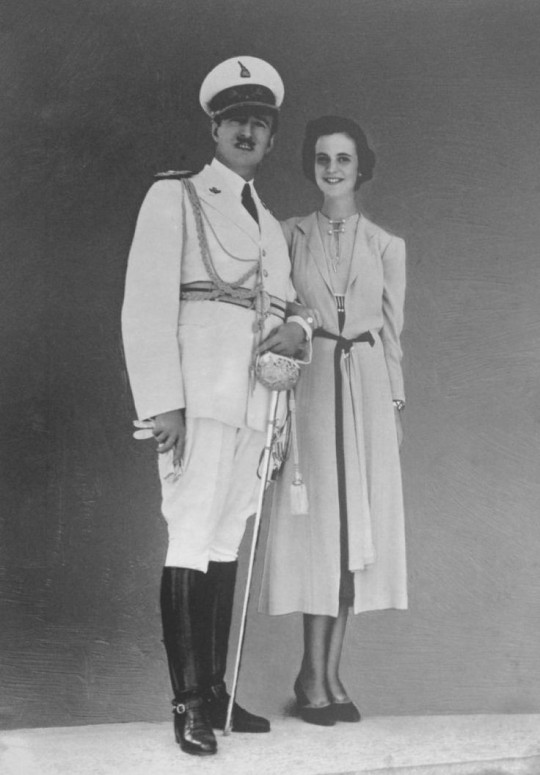
King Zog I of Albania and his wife Queen Geraldine
#king zog of albania#queen geraldine of albania#albanian royal family#albanian history#house of zogu
26 notes
·
View notes
Text
Albanian Goat Tiaras
duchessofostergotlands replied to your post “Weird question but is there any tiaras with mamals shape like lions or...”
Goat tiaras? Wow!
Yes and they’re amazingly weird! They all feature the Helmet of Skanderbeg which is helmet with a goat head that is a national symbol of Albania.
First came the tiaras of King Zog of Albania’s sisters. The were made by Marianne Ostier and have the same oak leaves and the goat helmet design. His two older sisters who were already married by the time he became king in 1928 didn’t get tiaras.

Clockwise from the top left: Princess Senije, Princess Myzejen, Princess Maxhide, and Princess Ruhije


Then in 1938, Ostier made another tiara for Queen Geraldine when she married King Zog. The floral part of this one is really beautiful and tricks me into forgetting the goat head.


There’s a later sapphire tiara with the goat helmet that was bought after the Albanian royal family was exiled. It wasn’t made by Ostier and isn’t nearly as nice as these. From left to right: Queen Geraldine, Crown Princess Susan, and Crown Princess Elia

#Tiara Talk#Albania#tiara#Albanian Royal Family#Queen Geraldine#Marianne Ostier#Princess Senije#Princess Myzejen#Princess Ruhije#Princess Maxhide#floral tiara#fauna tiara#diamond#duchessofostergotlands#Crown Princess Susan#Crown Princess Elia
319 notes
·
View notes
Text
3 notes
·
View notes
Photo

THE JEWEL
H.M. Queen Geraldine of The Albanians Brooch
14 notes
·
View notes
Note
There's a new Princess Geraldine of Albania!🎉🎉🎉🎉
There is! I’m not really interested in the Albanian royal family but I saw the name and it made me think of Geraldine from the Vicar of Dibley. I know it’s a family name but it’s not something I’d associate with a baby
7 notes
·
View notes
Text
Miss Universe 2019- Meet The Contestants
Miss Universe 2019 will be the 68th edition of the Miss Universe pageant. During the conclusion of the pageant, Miss Universe 2018, Catriona Gray of the Philippines will crown her successor as the new Miss Universe.
The pageant will be hosted by Steve Harvey on his fifth consecutive year. Miss Universe 2019 will mark the first year of the new crown made by luxury jeweler Mouawad which shall be replacing the Mikimoto Crown. Now let us meet the contestants vying for the prestigious Miss Universe 2019 crown.
#gallery-0-5 { margin: auto; } #gallery-0-5 .gallery-item { float: left; margin-top: 10px; text-align: center; width: 33%; } #gallery-0-5 img { border: 2px solid #cfcfcf; } #gallery-0-5 .gallery-caption { margin-left: 0; } /* see gallery_shortcode() in wp-includes/media.php */
Albania- Cindy Marina
Armenia- Dayana Davtyan
Aruba- Danna García
Australia- Priya Serrao
Austria
Bahamas- Tarea Sturrup
Barbados- Shanel Ifill
Belgium- Elena Castro Suarez
Belize- Destinee Arnold
Bolivia- Fabiana Hurtado
Brazil- Júlia Horta
British Virgin Islands- Bria Smith
Bulgaria- Lora Asenova
Cambodia- Somnang Alyna
Canada- Alyssa Boston
Cayman Islands- Kadejah Bodden
Chile- Geraldine González
China- Rosie Zhu Xin
Colombia- Gabriela Tafur
Costa Rica- Paola Chacón
Croatia- Mia Rkman
Curaçao- Kyrsha Attaf
Czech Republic- Barbora Hodačová
Denmark- Katja Stokholm
Dominican Republic- Clauvid Dály
Ecuador- Cristina Hidalgo
El Salvador- Zuleika Soler
Equatorial Guinea- Serafina Eyene
Finland- Anni Harjunpää
France- Maëva Coucke
Georgia- Tako Adamia
Germany- Miriam Rautert
Great Britain- Emma Jenkins
Guam- Sissie Luo
Haiti- Gabriela Vallejo
Iceland- Birta Abiba Þórhallsdóttir
Indonesia- Frederika Alexis Cull
India- Vartika Singh
Iran
Ireland- Fionnghuala O’Reilly
Israel- Sella Sharlin
Italy- Sofia Trimarco
Jamaica- Iana Tickle Garcia
Japan- Ako Kamo
Kazakhstan- Alfïya Ersayın
Kyrgyzstan- Elmara Buranbaeva
Laos- Vichitta Phonevilay
Malaysia- Shweta Sekhon
Malta- Teresa Ruglio
Mauritius- Ornella LaFleche
Mexico- Sofía Aragón
Mongolia- Gunzaya Bat-Erdene
Myanmar- Swe Zin Htet
Namibia- Nadja Breytenbach
Nepal- Pradeepta Adhikari
Netherlands- Sharon Pieksma
New Zealand- Diamond Langi
Nicaragua- Inés López
Norway- Helene Abildsnes
Panama- Mehr Eliezer
Paraguay- Ketlin Lottermann
Philippines- Gazini Ganados
Poland- Olga Buława
Portugal- Sylvie Silva
Puerto Rico- Madison Anderson
Russia- Alina Sanko
Saint Lucia- Bebiana Mangal
Sierra Leone- Marie Esther Bangura
Slovakia- Laura Longauerová
South Africa- Zozibini Tunzi
South Korea- Lee Yeon-joo
Spain- Natalie Ortega
Sweden- Lina Ljungberg
Thailand- Paweensuda Drouin
Turkey- Bilgi Nur Aydoğmuş
United States Virgin Islands- Andrea Piecuch
United States of America- Cheslie Kryst
Venezuela- Thalía Olvino
Vietnam- Hoàng Thùy
Zambia- Didia Mukwala
Picture Courtesy: Miss Universe Predictions
Vote For Your Favorite Miss Universe 2019 Contestant Here!
Miss Universe 2019- Schedule, Contestants and News! Miss Universe 2019- Meet The Contestants Miss Universe 2019 will be the 68th edition of the Miss Universe pageant.
2 notes
·
View notes
Photo

Është djalë! Foshnja e parë e vitit 2019 lindur në 00:01 në Maternitetin "Mbretëresha Geraldinë". Ai është quajtur Elis nga prindërit e tij. ▪ It's a boy! First baby born in 2019 in #Tirana, #Albania. He is named Elis by his parents and was born at 12:01 a.m. at Maternity "Queen Geraldine". https://www.instagram.com/p/BsEk2FBgZSm/?utm_source=ig_tumblr_share&igshid=1ctq7wfjk7p2
2 notes
·
View notes
Text
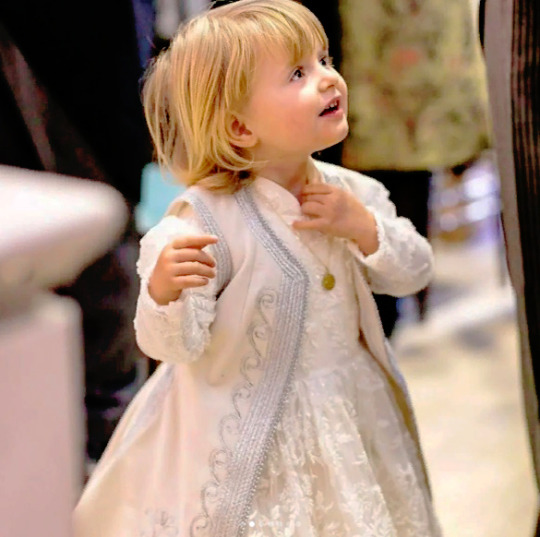
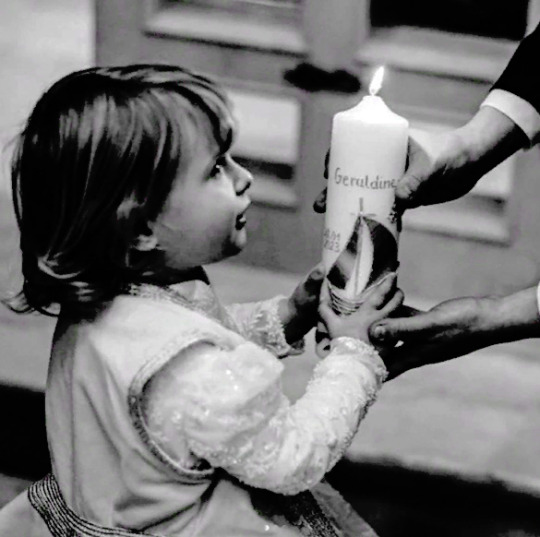

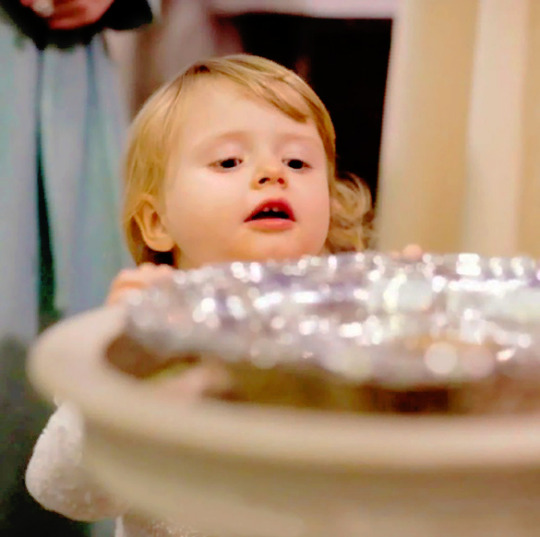
The christening of Princess Geraldine of Albania took place on january 28th, 2023. The little princess was christened as Geraldine Sibilla Françeska Suzan Maria by Archbishop Arjan Dodaj. Geraldine is only child of Prince Leka II of Albania and his wife Princess Elia. She was born on 18th death anniversary of Queen Geraldine (her great-grandmother).
Princess Sibilla of Luxembourg is her Godmother.
(source: @royals_without_throne on Instagram).
#albania#princess geraldine#royal children#albanian royal family#luxembourg#princess sibilla of luxembourg#christening#princess geraldine of albania
31 notes
·
View notes
Text

“Princess Geraldine of Albania recently turned 3 years old. She is such a beautiful little girl. ❤👸👼” - Submitted by Anonymous
31 notes
·
View notes
Photo

The wedding of King Zog I of Albania and Countess (Geraldine) Apponyi de Nagy-Appony, 1938
#royal wedding#royalty#royal family#geraldine of albania#albanian royalty#albanian royal family#zog i of albania#1938#1930s
23 notes
·
View notes
Photo

Wedding of Zog I with Geraldine of Albania in 1938
2 notes
·
View notes
Photo

Grim History
Albania’s King Zog and the Politics of Irrelevance
At the turn of the 20th century, Albania was an outpost of the Ottoman Empire. Its landscape was characterized by rugged mountains, deep river gorges, and mosquito infested bogs. Lawless and anarchic, the Albanians were tribal people divided between the Ghegs in the north and the Tosks in the south and further subdivided by the religions of Islam, Catholicism, and Eastern Orthodox Christianity. They had no centralized government and no police force; their societies were barely ruled by a handful of corrupt Turkish beys and the Code of Lek, a medieval system of laws, was sternly obeyed by the tribal society. Blood feuds, where three male members of a tribe were to be assassinated in retaliation for a murder, were the most prominent means of law enforcement.
At the time of the Balkan Wars of the early 20th century, a young Muslim warlord named Ahmed Zogolli from the Mati valley led rebellions against the Ottoman Empire alongside the Serbs, Bulgarians, and Greeks. After the Turks were forced to flee the Balkans, Zogolli became a member of the fledgling parliament of the newly formed nation of Albania. Zogolli became a prominent member of the ruling class until a leftist rebellion fueled by the antagonism of the American educated Fan Noli resulted in an assassination attempt on his life. The leftist rebel faction were supported by the Tosks who saw the new government as being a tool for Gheg domination of Albania. Needless to say, after being shot six times in the arm and chest, Zogolli survived, recovered, and went into exile in Vienna in 1924.
While recovering in Vienna, Zogolli made plans with Serbian agents to return to his homeland and seize power with 600 of his fellow countrymen. After the leftist Tosk coup was overthrown, Zogolli won a sham election and became president of Albania for seven years. He changed his name to Zogu to make it sound more modern and less Turkish. He then wrote a constitution giving himself sweeping executive and legislative powers and the road to autocracy was opened wide for him. He cast himself as a modernizer with the intention of bringing Albania into the modern world. Politically Zogu was more of a dictator, running a police state with strict control over the media. His key piece of legislation was borrowing annual sums of money from Italy to build up the economy, educational system, and infrastructure. Another consequence of his presidency was handing the largely ethnic Albanian territory of Kosovo over to Yugoslavia to return the favor of assisting him in the overthrow of Fan Noli’s Tosk coup.
Death threats were a routine part of Zogu’s presidency. He never went out in public without his mother because according to the rules of the blood feud, women were not to bear witness to a killing.
Then in 1928, President Zogu crowned himself King Zog I of Albania, the first Muslim monarch in Europe. The citizens of Albania were largely indifferent to this event; their nation was one where a largely traditional and illiterate populace cared little about politics, nationalism, or modernity.
As king, Zog lived a secluded life inside his heavily guarded palace in Tirana while sometimes making excursions to his coastal retreat in Durres. He was a soft-spoken, quiet, and gentle man, well over six feet tall, who chain smoked and dyed his hair red with henna. He had no close friends and spent most of his social life with his mother and six doting sisters. Zog’s cabinet members were more like henchmen and he made all political decisions by himself. His method of governing involved little more than paying tribal chieftains large sums of money to leave him alone. Most Albanians did not care for King Zog but it can be said that apathy and fatalism prevented any outright rebellions against him more than anything else. Many found it more profitable to solicit bribes from their monarch than to wage war against him, gambling for something that would probably be worse.
As king, Zog I was involved in more than 600 blood feuds and supposedly survived 55 assassination attempts. The most well-known plot happened in Vienna while recovering from an illness. Zog was shot at by two men after leaving the opera. The bullets hit a a bodyguard, mistaking him for the king. The bodyguard fell on top of Zog in his limousine, involuntarily becoming his human shield . The assassins were apprehended and Zog escaped. They turned out to be two disgruntled expatriates who were possibly supported by Kosovars who wanted their annexed territory to be reunited with a Greater Albania.
Then trouble with Italy began. Mussolini started to demand that Albania repay the money they borrowed but they simply did not have enough capital to do so. Mussolini cut off the loan disbursements, leaving Albania a country with half-constructed bridges and roads and an impoverished educational system. Mussolini’s plan of training Albanian warriors to be foot-soldiers for fascist Italy came to nothing since the Albanians were resistant to military regimentation. After Italy failed to conquer Libya and Ethiopia, Il Duce decided it was time to reinvigorate his country by conquering Albania, thereby bolstering his sagging reputation for military prowess while Hitler’s Germany marched across Europe. At 1:00 am on the night Zog’s wife Queen Geraldine gave birth to the crown prince, Italy invaded by sea and air. At first a small resistance force tried to fight them off with machine guns but soon gave up when they saw they were outnumbered. It is said they cared more about defending their fatherland against the mistrusted Italians than in defending their king. Zog quietly took the queen, heavily sedated after a caesarian-section, his newborn son, and several suitcases filled with gold stolen from the national treasury across the border into Greece.
The royal family eventually settled as refugees first in France and then in London. King Zog spent World War II trying to convince the Allies that he could raise troops to fight off the Italian invaders. They shrugged him off as an eccentric and irrelevant monarch and their interest in fighting Italy to save Albania seemed too much like small fry for their larger strategies. Then the war ended. The terrifying years of Enver Hoxha’s communist regime began. After a couple botched attempts by the CIA and MI6 to overthrow Albania’s government and reinstate King Zog I as monarch, he continued to live on his dwindling funds while his health conditions grew worse and worse each year. Finally King Zog, the founder of the modern Albanian nation, died at the age of 65.
Tomes, Jason. King Zog of Albania: Europe’s Self-Made Muslim Monarch. New York University Press, 2003.
4 notes
·
View notes